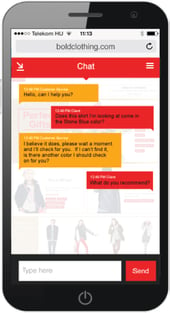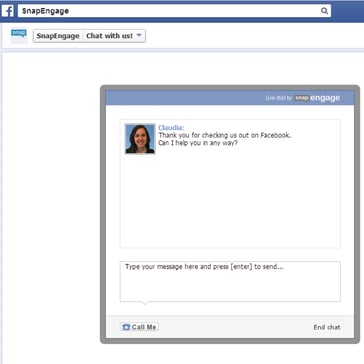More than Chat Windows

By Allison Howen, Associate Editor
Enterprises must be willing to step out of their virtual comfort zones in order to keep customers satisfied with their online brand experiences.
This is a difficult task, as it is not uncommon for brands to receive hundreds of customer service queries through Twitter, live chat and email on any given day. Moreover, Google data shows that 33 percent of mobile research begins on branded websites, which means that a company's mobile presence also needs to be prepared for any customer service requests that may arise.
In order to excel at customer service in today's digital world, an enterprise needs to put its best digital foot forward by leveraging the appropriate technologies so that its teams can handle customer service requests efficiently across all channels.
Let's Have a Mobile Chat
Mobile has infiltrated nearly every aspect of business nowadays, and live chat is no different. The challenge, however, is offering a chat solution that doesn't interrupt the mobile user experience, as the small screens of smartphones don't offer a lot of space for communication.
One way enterprises are bringing live chat to the small screen without interrupting the user experience is with semi-transparent chat windows. BoldChat, for example, offers a mobile chat solution that features layered chat windows. Through this solution, conversations are superimposed over Web pages, enabling consumers to still view what's behind it. To provide an even better experience, customers have the ability to minimize chat windows as well as browse other pages without losing the chat.

BoldChat's layered chat window for mobile devices.
Enterprises also have the ability to incorporate customer service tools into their mobile applications. Solutions like Nina Mobile, for instance, can provide consumers with a better experience via voice-controlled virtual assistant technology. With this solution, brands can streamline the authentication, navigation and transaction processes within their mobile apps, and encourage further interaction.
While mobile is just beginning to emerge as a player within the customer service industry, social networks are already a force to be reckoned with.
Serving the Social Segment
Today's digital consumer is not timid about connecting with brands through social media. In fact, a 2013 BoldChat study found that the number of consumers who prefer using social media as their preferred way to contact a brand grew by 225 percent when compared to 2012. It's safe to say that social customer service will continue to grow in the years to come.
There are many ways enterprises leverage social for customer service today. For instance, brands like T-Mobile, Best Buy and Dish use dedicated Twitter handles to address customer requests on the social network. For those with a Facebook presence, however, it is a better idea to use a platform like SnapEngage, which enables enterprises to serve customers via a Facebook app. Fans have the ability to ask questions and receive responses from customer service agents through the app without leaving the social network. Moreover, agents can direct the conversation to the brand's website or call center for further assistance when necessary, the app supports omni-channel initiatives as well.

T-Mobile uses SnapEngage to better serve its social customers.
Even though customer service requests are increasing on social networks, enterprises should still take steps to empower self-service whenever possible.
Providing Self-Service
Digital customers often like to do things themselves - that's why they are online in the first place. It's not uncommon, however, for customers to become frustrated when they are forced to make service requests to figure out how to complete specific tasks. There are steps that enterprises must take, however, to empower customers to better serve themselves.
Community forums, for example, are a great resource for customers who want to learn from other customers' experiences. Social customer community software Lithium, for instance, offers a discussion forum solution that enables site visitors to connect with their peers through online conversations. With forums, customers are able to conduct research and find answers to their questions before taking the step to contact a customer service agent. Plus, enterprises can bring employees into the conversations to address some of the more difficult questions and topics. For a "Master List of Social Community Platforms," visit wsm.co/scommunity.
Enterprises can also equip their customer service centers with the technology needed to teach customers how to serve themselves in the future. Recently, TouchCommerce unveiled a solution called TouchConnect, which enables service agents to use features like co-browsing, content sharing and more to lead customers off traditional call channels. According to TouchCommerce Director of Product Marketing Marina Kalika, providing self-service offers a variety of benefits for brands.
"The benefits of TouchConnect include reducing enterprise support costs because we are deflecting future calls, we are moving visitors to self-service and we are improving the Next Call Prevention metric," said Kalika. "We are also promoting cost-saving actions, such as asking people to sign up for emails."
The Winning Combination
In today's digital world, enterprises must not only be flexible enough to respond to customer requests across channels, but they must also leverage the technology to make their customer service teams more efficient. In doing so, they are more likely to deliver positive experiences that will lead to more conversions in the future.

Subscribe to Our Newsletter!
Latest in Marketing








